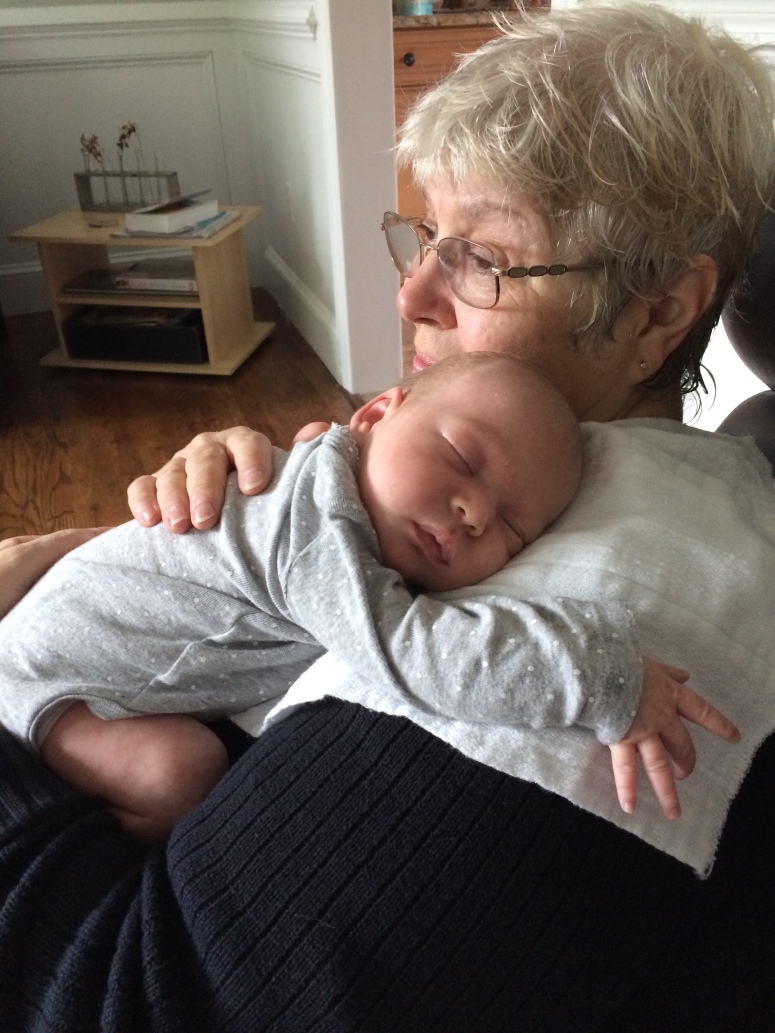
Two of my favorite muses. My mother, here, inspiring yet another generation of mindful artists.
Two people are standing in front of a painting by Jackson Pollock. One says genius and the other says a kid could do that. One is reminded of landing in a desert storm and the other dispassionately stares at drips and scribbles. Same painting, two experiences, and all in one family!
Tada, what makes us different makes us stronger. Pollock and these two people have unalike internal experiences when it comes to his art. And that is okay. Mindfulness, tolerance that softens reactivity and judgment, embraces differing creator and audience experiences. A mindful artist works from and reaches out to the universe with an open mind.
We are too varied as a species to force a singular perspective, because of those gosh-darn complicated very human parts of us called the brain and social forces. Our personal story and neurological wiring speaks to us as much, often, as what’s right in front of us.
Many of us miss out on fully showing up for what’s right in front of us because we’re too busy romancing old stories and autopilot biases. Case in point, pondering Pollock. Even though our stories and wiring have a lot to say, we may be doing ourselves, our artistry, and the world a disservice by thinking they get to call all the shots.
Fluid frames of reference resolve disputes over how to interpret art. And all audience opinions may end up winning! The mindful artist that tolerates a variety of audience opinions, proceeding to the beat of her drum regardless, may be the biggest winner.
Wouldn’t the world be a better place if we all tolerated fluid frames of reference on a daily basis?
My mom molded me into a mindful artist without her even labeling it that. She welcomed creativity in whatever form and honored whatever I called my whatever. Bless her heart, she waited til I was a ripe seventeen years old to challenge my point of view after reading my essay on the racist, feminist economics of Barbie.
“I’m not sure I agree with what you’re saying here,” she concluded, “this isn’t Barbie’s fault?”
Anyhow, leaving Barbie out of this, til age seventeen and from every dang year after that, my mom demonstrated tolerance for the point of view from which my creativity pulled. I have a savage curiosity to get to the why under the because and to challenge norms. It drives many people bonkers. Including myself. But, momma more than tolerated me. She allowed me to develop my own life stance through space to explore and questions (usually) rather than harsh critiques. Among our rich bonds, we’ve developed a shared respect for art-whatever, even if we have very different experiences with whatever has been created.
Play around with fluid frames of reference, today, in honor of my beloved mother’s 70th. Mindful artistry blossoms from the flexibility to do just that. At times, allow an onion to be an onion. As a therapist, I often hear my husband say, “let a text be a text, don’t read ideas between the words.” Same thing. There is health in simply seeing the onion.
Practice awareness of explicit ideas.
Practice now: just see the onion.
Of course, the brilliance of art is that an onion may symbolize much more. In this way, even side-by-side bananas can be sexy, no matter the shade or degree of spotting. For the writer or poet, onion expressions embody layers beneath the surface or inspiration for bitter tears.
Practice representational awareness.
Practice now: what does an onion mean to you?
Practice now: create a story about the side-by-side bananas.
For farmers, a relationship to an onion’s quite different than the one that top chefs hold. Point of view affects our experience with anything, including art. People may be working with the same onion but vary in their internal processes. And for those who have never seen an onion, what on earth could it possibly be? (To my daughter, they look like, Boobies!)
Practice alternate points of view.
Practice now: challenge yourself to imagine what else the onion could be, completing the phrase below.
This is not an onion, it’s ______________
And thank you, Brenda Louise Kutz Honig, for sticking to the beat of your wild drum…and raising a mindful artist. You are loved.
